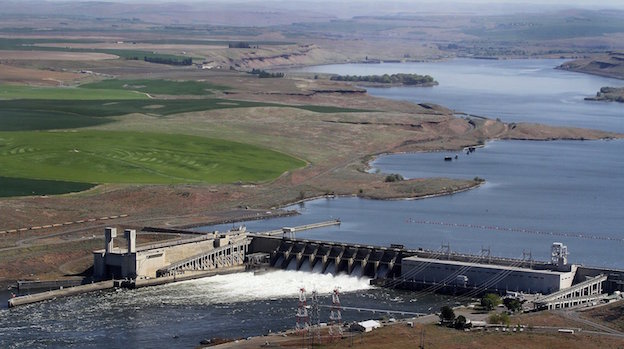forum
library
tutorial
contact

Is the Northwest Power and Conservation
Council Still Relevant?
by George Caan
NW Fishletter, June 13, 2024
|
the film forum library tutorial contact |

|
Is the Northwest Power and Conservation
by George Caan
|
A regional body was created to plan for regional energy needs based on ranges of growth forecasts
that would reduce the risk of large errors and help guide the Bonneville Power Administration
 In 1980, I had just graduated from college with a degree in mechanical engineering from MIT and was starting my professional career with the City of Boston as their energy manager. At the same time, although not aware, a great experiment in power planning was occurring in the Northwest with the passage of the Northwest Power Act and the creation of the Northwest Power Planning Council, now known as the Northwest Power and Conservation Council. Five years later I found myself in Olympia, Washington, working for the Washington State Energy Office on projects related to the activities of the Council.
In 1980, I had just graduated from college with a degree in mechanical engineering from MIT and was starting my professional career with the City of Boston as their energy manager. At the same time, although not aware, a great experiment in power planning was occurring in the Northwest with the passage of the Northwest Power Act and the creation of the Northwest Power Planning Council, now known as the Northwest Power and Conservation Council. Five years later I found myself in Olympia, Washington, working for the Washington State Energy Office on projects related to the activities of the Council.
I quickly learned of the regional debacle that led to the passage of the act, the inaccurate projection of load growth and the resources needed to serve them. Regardless of the reasons why it was created, it seemed to me a great idea that a regional body was created to plan for regional energy needs based on ranges of growth forecasts that would reduce the risk of large errors and help guide the Bonneville Power Administration to operate the federal hydropower system. The Council, appointed by the governors of Washington, Oregon, Idaho and Montana, seemed the appropriate place to house the regional planning efforts.
The Council's efforts to hardwire conservation standards in the Northwest were admirable and effective. Residential and commercial building codes, market transformation efforts for lighting and motors, and a regionwide consensus on the importance of conservation were critical. The effort helped to decouple our growth from our energy needs. It would prove to maximize the benefits of the federal Columbia-Snake river systems for 40 years.
But what about today? Has the Council outlived its usefulness and necessity? Could the Council be in the way of more effective planning and a more realistic view of the future energy resource needs of the region. I think it might. Let me cite some specifics.
The load and resource data show the region is expected to be in shortage due to two policy choices. The first is a rapid escalation of the electrification of the economy. Electric vehicles and the elimination of natural gas for heating through building codes is increasing the demand for electricity. The second is the closure and elimination of all fossil fuel baseload generation in exchange for the development of intermittent renewable resources.
Another data point is the recent agreements related to the Snake River dams. Although a renewable baseload resource, the states of Washington and Oregon seem to have no problem in calling for their removal. Was the Council consulted? And why were two of the member states of the Council not included? Perhaps the states of Idaho and Montana would have objected and thereby would not be helpful in reaching the agreements. Further I was under the impression that the Council had the responsibility for resource planning. Where was it?
If the Council was living up to its responsibility it should have raised its collective concerns about the paths two of the states were taking that are leading to policy-driven outage increases in the future. It would have spoken clearly about the timelines for removing baseload generation and would have strongly encouraged its state executives and legislatures to slow down until we have a better strategy to meet increased electrical loads with reliable generation. Or, if it were honest, to just agree that increased outages are the price we pay for a cleaner electricity portfolio. In either case, "hope for the best" is not a utility management strategy.
There is still time for the Council to show its relevance by doing what it was created to do: provide an honest and accurate assessment of the region's energy situation. It can still call upon states to do a better job in planning resource strategies that are realistic and achievable. Members do not have to shrug their shoulders and hope for the best; they should be responsible and accountable for providing honest leadership. If not them, then who?
learn more on topics covered in the film
see the video
read the script
learn the songs
discussion forum
